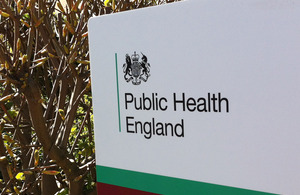ESCAPE-pain for knee pain
A rehabilitation programme for people with chronic joint pain.

Summary
ESCAPE-pain is a rehabilitation programme for people with chronic joint pain, that integrates educational self-management and coping strategies with an exercise regimen individualised for each participant.
Robust evaluation shows that ESCAPE-pain reduces pain, improves physical function, improves the psychosocial consequences of pain and reduces healthcare and utilisation costs. Research trials followed patients for up to 30 months after the end of the programme and demonstrated continued improvements.
ESCAPE-pain is NICE and QIPP approved, included in the Richmond Group’s ‘Doing the right thing’ report, endorsed by Arthritis Research UK and recommended by NHS Right Care.
Patient feedback is consistently positive.
There are currently 41 ESCAPE-pain sites across the UK. The programme is run in a mix of physiotherapy outpatient departments and at leisure and community sites.
The programme is very flexible and can also be set up as a mixed model, like in Cheltenham where the classes are co-delivered by an NHS physiotherapist and a fitness instructor, as a result of a partnership between Cheltenham General Hospital and The Cheltenham Trust.
Gym access
ESCAPE-pain classes in Cheltenham are held in the local leisure centre, initially in a circuit-type setting in a studio. They are then moved to a gym on the third week of the programme, to allow some time for the participants to get used to the idea of going to a gym.
Referral pathways
The physiotherapy department accept self-referrals, as well as GP and consultant referrals, and patients have an initial individual assessment with a physiotherapist who will signpost to the ESCAPE-pain class as appropriate.
Successful Retention rates
Initially, the programme had a high drop-out rate. Attendance and retention rates have improved to 80% and 100% due to the introduction of:
- comprehensive discussion on the first session to dispel any negative beliefs about physical activity and set realising programme expectations
- 2 expert patients (ESCAPE-pain participants from the previous course) attending the first session to talk about their experience
- pre-course telephone calls with participants
- detailing the post-course activity options
Benefits of this model
In addition to the general benefits of the programme, this model helps patients move from healthcare into community leisure activities and reduces strain on physiotherapy staffing levels and facilities.
Participants who might otherwise have seen the gym as a place not suitable to them, due to their age and health condition, become used to the leisure setting, with some continuing to attend the gym on a regular basis as a result.
Further information
For more information, please contact the ESCAPE-pain team on hello@escape-pain.org.